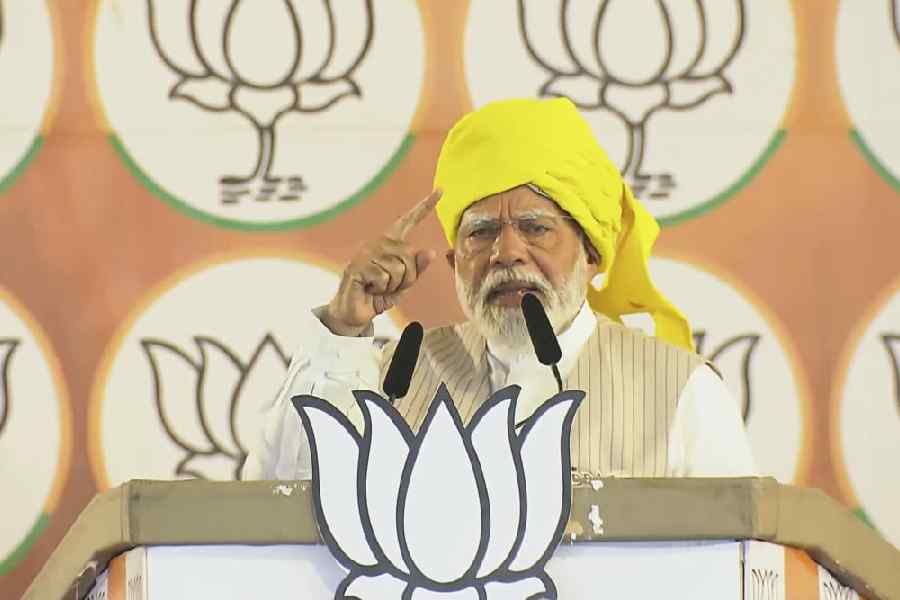Last Sunday, in response to an invitation from the film-maker, Vivek Agnihotri, I attended a preview of his latest film, The Vaccine War, at a cinema hall in New Delhi’s Connaught Place. Back in a social gathering in the national capital after a prolonged absence, it was a wonderful opportunity to touch base with the so-called ‘right-wing ecosystem’. It is not necessary to spell out who exactly was there and who was conspicuously absent that evening. It is sufficient to say that the ‘right wing’ I am referring to is only perfunctorily in government and Parliament. Although there may be a small overlap between this ecosystem and those who are Bharatiya Janata Party activists, now preparing the ground for next year’s general election, most happened to be writers, think-tankers, media apparatchiks, lawyers and, of course, academics. The gathering was an absolute mirror image of the beautiful Left-liberals gathered at the India International Centre for an anguished lecture by a greying celebrity lamenting the slow onset of fascism in the land of the Mahatma.
Even a decade or so ago, such a gathering would have been inconceivable. When outraged academics generated anti-Hindutva literature on an industrial scale from the time the BJP first made a big electoral splash in 1991, their perception of the Hindu ‘Other’ hadn’t changed fundamentally from the people caricatured by the patrician, Lady Lily Chatterjee, in Paul Scott’s Jewel in the Crown: “… Hindu did not mean Congress… Hindu meant Hindu Mahasabha. Hindu nationalism. Hindu narrowness. It meant rich banias with little education, landowners who spoke worse English than the youngest English subdivisional officer his eager but halting Hindi. It meant sitting without shoes and with your feet curled up on the chair, eating only horrible vegetarian dishes and drinking disgusting fruit juices.” True, Narendra Modi has won an entirely unexpected victory over a Congress that had got itself mired in corruption. But this was viewed as a ‘black swan’ event. Modi, so went the consensus among the chattering classes, lacked the systemic depth to run a government for long. The BJP would either have to become a soft Hindu version of the Congress or reconcile itself to the margins of power.
The audience that accorded an enthusiastic — lots of chants of Bharat Mata ki Jai after a particularly inspiring dialogue — reception to Agnihotri’s The Vaccine War may well have been biased and too influenced by the subtext of his earlier, controversial The Kashmir Files. However, there is no doubt that the theme of the film — India can do it — will resonate among audiences after the morale-boosting success of the Chandrayaan-3 mission to the moon.
When the Covid pandemic hit the country in early 2020, there was a feeling of utter helplessness among a very large section of the people over the lack of any known prevention from and cure against this mystery ailment. On top of this, there was a wave of negativity which was primarily based in a belief that the Covid-19 dislocation was a god-sent opportunity to strangle the Modi government. This was especially so, first during the lockdown and, subsequently, during the devastating ‘second wave’ that led to a shortfall in the supply of oxygen cylinders. How this mood of fear and despondency was transformed into a nationalistic determination to confront and beat back the challenge is the theme of Agnihotri’s film. The heroes and heroines are not from the world of glamour but very ordinary, sometimes dowdy, women scientists and medical administrators who make up in their skill and determination what they lack in outward sophistication.
At one time, India’s scientific establishment was headed by dashing figures such as Vikram Sarabhai and Homi Bhabha. Unfortunately, they presided over a science establishment with inadequate resources and infrastructure. I wouldn’t suggest that Jawaharlal Nehru and his daughter lacked the political will to give Indian science a rocket boost. Far from it. They were, however, handicapped by a very creaking economy that limited the horizons of India’s scientific endeavours. Today, the situation is very different. In terms of their determination and nationalism, there may be little to differentiate the heads of the Indian Council of Medical Research or the Indian Space Research Organisation from the likes of Sarabhai and Bhabha. All wanted India to make a mark on the world stage. But whereas the leaders of the Nehruvian establishment were patricians and blessed with elite education, the leaders of those who gave us the indigenous anti-Covid vaccine and the Chandrayaan-3 are socially more representative, as are the scientists who overcame tremendous odds to give India cost-effective outcomes.
Predictably, the evolution of India’s nationalism from Nehru to Modi isn’t without its complications. In the mid-1960s, in the days of Manoj Kumar-fuelled nationalism, many Indians were nurtured on the legend of Nehru breaking into tears at Lata Mangeshkar’s “Ae mere watan ke logo”. They may even have been moved by Chetan Anand’s Haqeeqat, centred on the valiant stand of an Indian platoon during the disastrous 1962 war with China. But while these were tales of bravery, they also told the story of defeat. The nationalism I detected at the screening of The Vaccine War was about a resurgent India overcoming the odds — a mindset of negativism and a media-multinational conspiracy to thwart atmanirbhar Bharat — and making a splash on the global stage. There is undoubtedly a marked anti-media message that resonates through the film, including the suggestion that there are members of the glamorous profession who are unable to distinguish between their visceral hatred of the Modi sarkar and their obligation to the country. This message, in turn, corresponds to the prevailing feeling in the right-wing ecosystem that there are foreign forces working overtime and in alliance with the dispossessed ancien régime to puncture India’s emerging self-confidence.
India’s role as a well-meaning plodder has abruptly received a setback in the past nine years since the advent of Modi. The image of a ‘soft State’ presided over by those Swami Vivekananda described as the ‘patient Hindu, the mild Hindu’ has been replaced by imagery that has more in common with Shivaji rather than Nehru. The right-wing ecosystem has finally found a focus and a purpose. My guess is that this will persist, politically speaking, well beyond next year’s general election.










